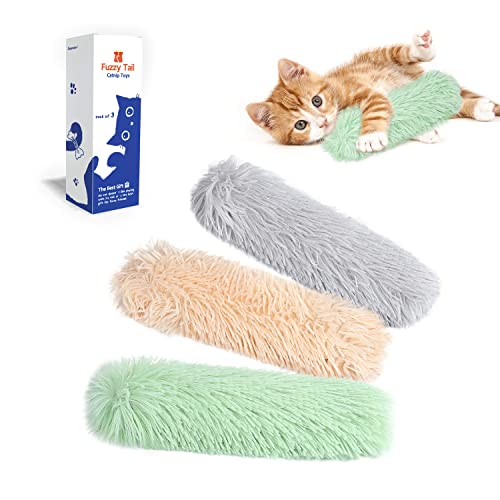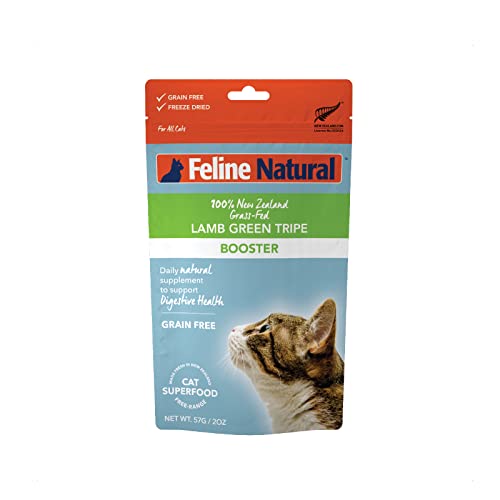Are Cats Able to Eat Celery Leaves?
As a cat lover, you may wonder if it’s safe to give your feline friend some celery leaves. Cats are known as obligate carnivores, meaning their bodies are designed to digest and thrive on a diet that is primarily made up of meat. However, cats do have taste receptors for other flavors, and they might occasionally show interest in trying different foods, such as vegetables.
But can cats eat celery leaves?
While celery leaves are not toxic to cats, they offer little to no nutritional value for them. Cats require specific nutrients like taurine, which is found mainly in animal-based proteins. Since celery leaves are low in these essential nutrients, they should not be a regular part of your cat’s diet. Instead, it’s best to stick to a well-balanced cat food that meets all their dietary requirements.
Here are a few things to consider before giving your cat celery leaves:
- Fiber content: Celery leaves contain a good amount of fiber, which can help promote healthy digestion in humans. However, cats have shorter digestive tracts, and their bodies are not designed to process plant fibers efficiently. Feeding your cat celery leaves in large quantities may cause digestive upset, including vomiting or diarrhea.
- Choking hazard: Cats have small throats and may struggle to swallow large chunks of food. Celery leaves can be stringy and fibrous, posing a potential choking hazard. If you decide to offer celery leaves to your cat, it is essential to cut them into tiny, manageable pieces.
Remember, cats have unique dietary needs.
Always consult with your veterinarian before introducing any new food into your cat’s diet, including celery leaves. Your vet will be able to provide specific guidance tailored to your cat’s health and nutritional requirements. They can also recommend alternative, cat-friendly vegetables that are safe and offer more nutritional benefits.
Keep your furry friend happy and healthy by providing them with the appropriate diet that meets all their nutritional needs.
Nutritional Value of Celery Leaves
When it comes to feeding your feline friend, it’s important to consider their nutritional needs. While cats are obligate carnivores and primarily need animal-based protein, you may have wondered if they can have a taste of vegetables like celery leaves.
Celery leaves, however, don’t offer much in terms of nutritional value for cats. It’s safe for them to consume in small amounts, but it shouldn’t be a regular part of their diet. Cats require specific nutrients that are found in animal protein, such as taurine and vitamin A, which are not present in large quantities in vegetables.
Although celery leaves are not toxic, they are largely made up of water and contain minimal amounts of fiber, vitamins, and minerals. These components are not essential for a cat’s overall health and well-being. It’s important to note that cats have specific dietary needs and should receive a well-balanced cat food that meets all of those requirements.
While celery leaves may not add much nutritional value to your cat’s diet, it’s always a good idea to consult with your veterinarian before introducing any new food into their meals. Some cats may have sensitivities or allergies to certain plants, including celery leaves. Your vet can provide guidance tailored to your individual cat’s needs and help you make informed decisions about their diet.
while celery leaves are not toxic to cats, they don’t offer significant nutritional benefits for them either. It’s best to stick to a balanced cat food that fulfills all of their dietary requirements. Remember, your cat’s health is important, and providing them with a well-balanced diet is the key to keeping them happy and thriving.
Potential Benefits of Celery Leaves for Cats
When it comes to your feline friend’s diet, you want to make sure they are getting all the essential nutrients they need. While cats are obligate carnivores and primarily require animal protein for their nutritional needs, adding small amounts of fruits and vegetables to their diet can provide some benefits. Celery leaves can be included as an occasional treat for your cat. Here are a few potential benefits of celery leaves for cats:
1. Hydration: Celery leaves are rich in water content, which can help keep your cat hydrated. Adequate hydration is important for your cat’s overall health and well-being.
2. Fiber: Celery leaves contain dietary fiber, which can assist in maintaining healthy digestion in cats. A small amount of fiber can promote regular bowel movement and prevent constipation.
3. Vitamins and Minerals: Celery leaves are a source of vitamins such as vitamin A and vitamin K, as well as minerals like potassium and folate. These nutrients contribute to your cat’s overall health and support their immune system.
While these potential benefits may seem appealing, it’s essential to remember that cats have unique dietary requirements. Cats obtain most of their essential nutrients from animal protein, which is not abundantly found in vegetables like celery leaves. Therefore, it is crucial to consult with your veterinarian before introducing any new food into your cat’s diet, including celery leaves.
- Offer celery leaves as a small and occasional treat instead of a regular part of your cat’s diet.
- Wash the celery leaves thoroughly before giving them to your cat to remove any dirt or pesticides.
- Monitor your cat’s response to celery leaves, as some cats may have allergies or digestive sensitivities.
- Stick to a balanced and complete cat food that provides all the necessary nutrients your cat needs.
Remember, the well-being of your cat should always be your top priority. Consult with your veterinarian to ensure that you are providing the best possible diet for your feline companion.
Risks of Feeding Cats Celery Leaves
While it may be tempting to give your cat a taste of celery leaves, there are some potential risks to consider.
Firstly, cats have a specific dietary requirement for animal protein. Their bodies are designed to break down and absorb the nutrients found in meat. Celery leaves do not provide the necessary amount of protein that cats need to thrive.
Moreover, some cats may have digestive problems or allergies to certain vegetables, including celery leaves. Feeding your cat celery leaves could potentially lead to stomach upset, diarrhea, or even vomiting. It’s important to monitor your cat’s reaction closely and consult with a veterinarian if you notice any adverse effects.
Additionally, celery leaves contain high levels of oxalates, which can be harmful to cats in large quantities. Too much oxalate can lead to the formation of bladder stones or urinary tract issues. Since cats are prone to urinary problems, it’s best to err on the side of caution and avoid feeding celery leaves to your feline friend.
Lastly, celery leaves may contain pesticides or other harmful chemicals that can be toxic to cats. Even if you wash the leaves thoroughly, it’s difficult to entirely remove these substances. Therefore, it’s safer to limit or avoid feeding your cat celery leaves altogether.
Remember, it’s crucial to prioritize your cat’s health and well-being. While celery leaves may offer some potential benefits, the risks outweigh the rewards. Stick to a balanced and complete cat food that provides all the necessary nutrients your cat needs to stay healthy. If you have any concerns about your cat’s diet, consulting with a veterinarian is always the best course of action.
So, next time you reach for the celery leaves to snack on, keep in mind that they’re more suitable for human consumption than for your furry friend.
Tips for Feeding Celery Leaves to Cats
When it comes to feeding your beloved feline friend, it’s important to prioritize their health and well-being. While cats have specific dietary needs, it’s natural to wonder if they can enjoy a variety of foods, including celery leaves. Here are some tips to keep in mind if you’re considering feeding celery leaves to your cat.
- Consult with a Veterinarian: Before introducing any new food to your cat’s diet, it’s always a good idea to consult with a veterinarian. They can provide expert advice tailored to your cat’s specific needs and guide you on what is safe and nutritious for them to eat.
- Moderation is Key: When offering celery leaves to your cat, remember that moderation is key. Cats are obligate carnivores, which means their bodies require protein from animal sources to thrive. While celery leaves can be a source of vitamins and fiber, they should not replace the primary protein source in their diet.
- Watch for Digestive Issues: Some cats may have difficulty digesting vegetables, including celery leaves. If you notice any signs of upset stomach, diarrhea, or vomiting after feeding celery leaves, it’s best to discontinue the practice and seek advice from your veterinarian.
- Consider Cat-Safe Herbs: If you’re looking to add some variety to your cat’s diet, consider cat-safe herbs such as catnip or cat grass. These can provide entertainment and stimulation for your cat while also offering some nutritional benefits.
Remember, cats have specific dietary requirements that are crucial for their overall health and longevity. It’s important to prioritize a balanced and complete cat food that meets all their nutritional needs. While it’s tempting to share our human food with our furry friends, it’s essential to ensure that it’s safe and appropriate for them.
We hope these tips help you make informed decisions about feeding celery leaves to your cat. When in doubt, always consult with your veterinarian. They are the best resource for maintaining the optimal health and happiness of your feline companion.
Conclusion
Remember, when it comes to feeding celery leaves to your cat, it’s always best to consult with your veterinarian first. While celery leaves can be a safe addition to your cat’s diet, moderation is key. They should never replace the primary source of protein in their meals.
Keep an eye out for any digestive issues that may arise when introducing celery leaves to your cat’s diet. If you notice any adverse reactions, it’s best to discontinue feeding them this particular food.
If you’re looking for alternative options, consider cat-safe herbs that can provide similar benefits. However, always do your research and make sure they are safe for feline consumption.
Ultimately, the most important thing is to prioritize a balanced and complete cat food that meets all of your cat’s nutritional needs. This will ensure that they stay healthy and happy for years to come.
By following these tips and guidelines, you can make informed decisions about feeding celery leaves to your feline friend. Remember, their well-being is always the top priority!
Frequently Asked Questions
Can cats eat celery leaves?
Yes, cats can eat celery leaves, but in moderation. However, it is important to consult with a veterinarian before introducing any new food to a cat’s diet.
Can celery leaves replace the primary protein source in a cat’s diet?
No, celery leaves should not replace the primary protein source in a cat’s diet. They should only be offered as an occasional treat.
What should I watch for if I feed my cat celery leaves?
Watch for any digestive issues such as vomiting or diarrhea. If these issues occur, stop feeding celery leaves immediately and consult with a veterinarian.
Are there any alternatives to feeding celery leaves to cats?
Considering cat-safe herbs can be a good alternative to celery leaves. However, it is important to research and consult with a veterinarian before offering any new food to a cat.













